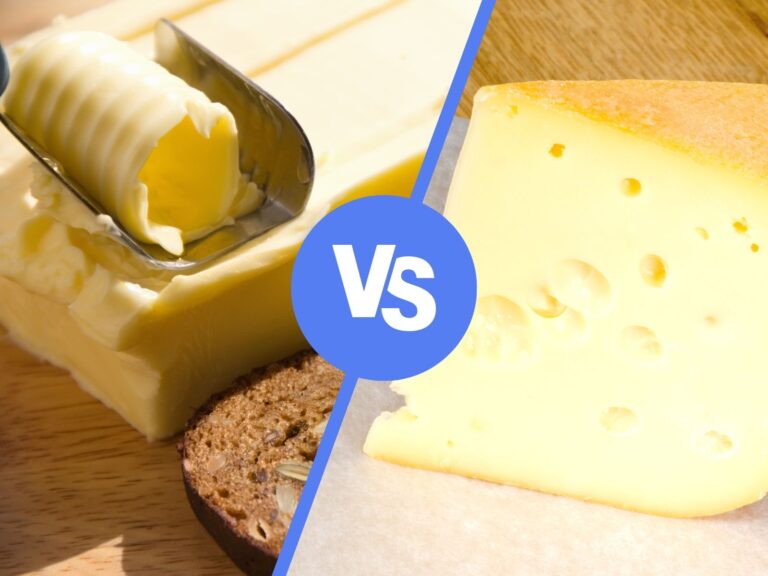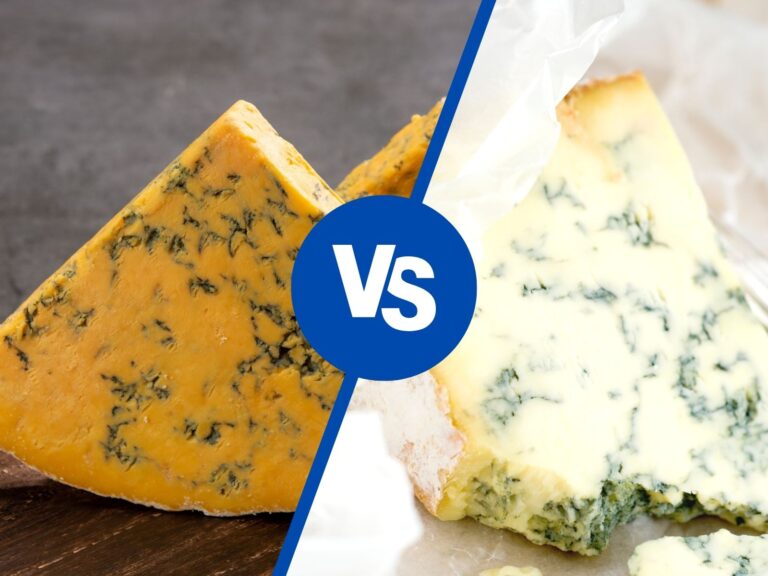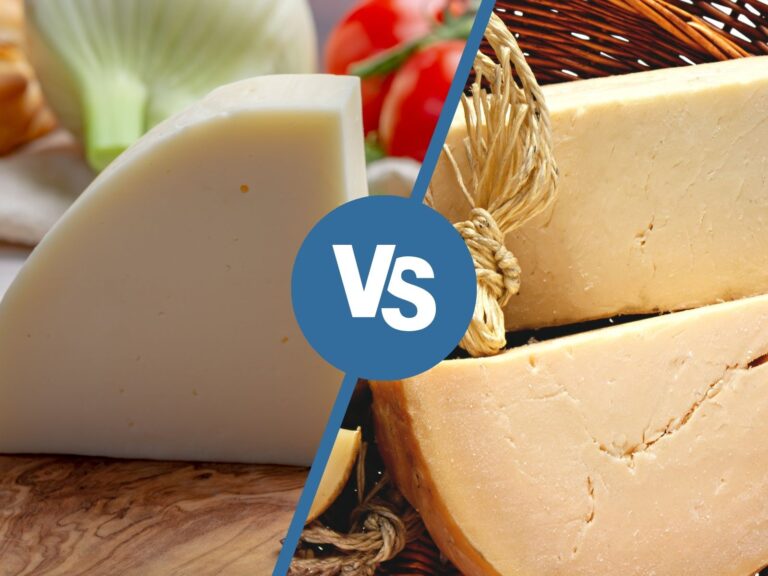Cheese and yoghurt are two of the most popular dairy products consumed around the world. Both have their unique taste, texture, and nutritional values. In this blog post, we will explore the similarities and differences between cheese and yoghurt.
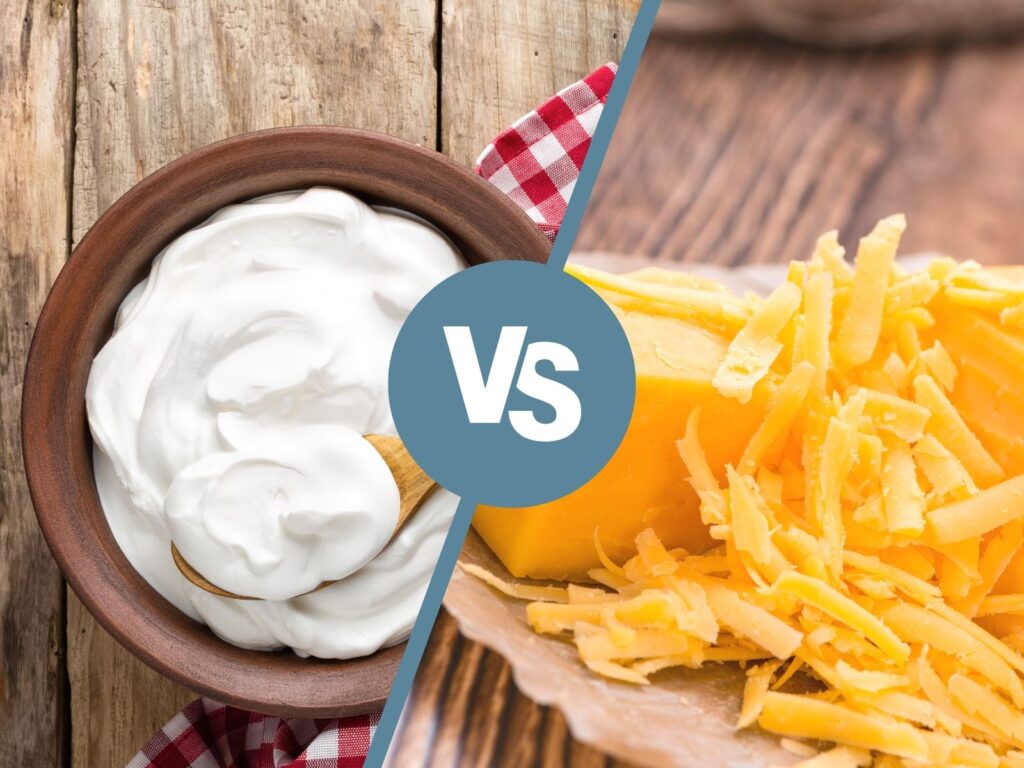
SEE ALSO: The essential ingredients you need to make cheese →
What are dairy products?
Without a doubt, yoghurt and cheese are two of the most popular dairy products worldwide. Before we delve into the similarities and differences between the two, let’s do a quick introduction on dairy products.
Dairy products are a group of foods that are made from milk or cream. They include a wide range of products such as milk, cheese, yoghurt, butter and cream. Milk is the base ingredient for many dairy products and is produced by mammals, including cows, goats and sheep.
Is it yoghurt or yogurt?
Yogurt and yoghurt are two different spellings for the same dairy product. The spelling “yogurt” is more common in North America, while “yoghurt” is commonly used in Europe, Asia and Australia.
What yoghurt and cheese have in common
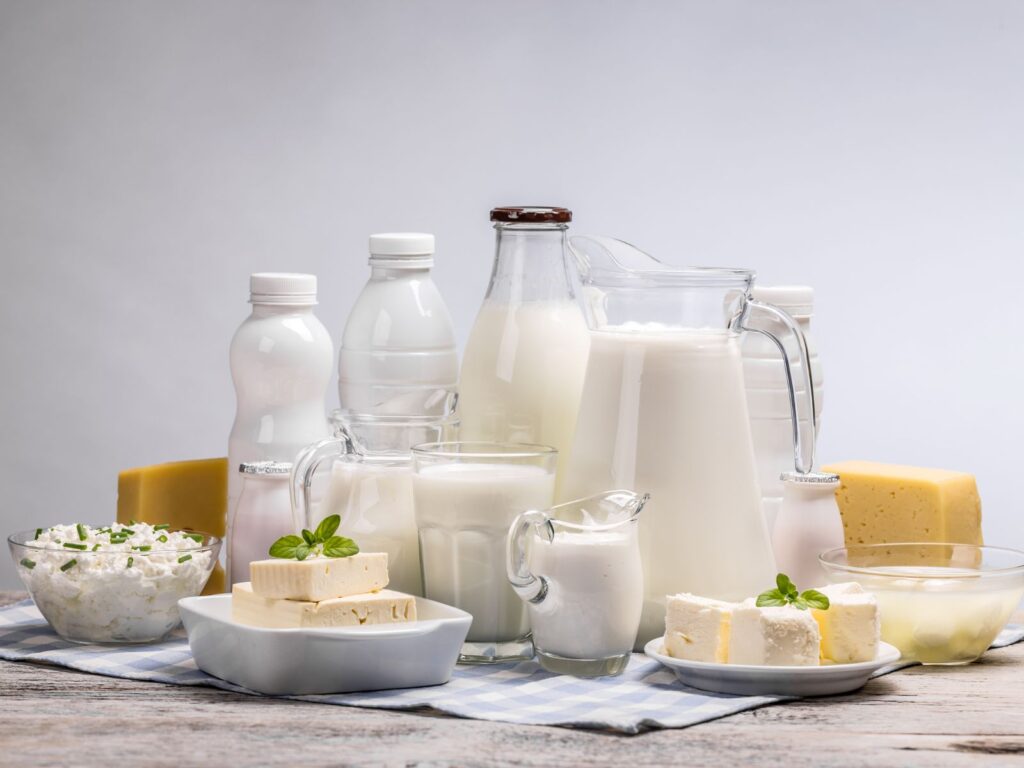
Both cheese and yoghurt are dairy products made from milk. They are also rich in protein, calcium, and other essential nutrients. Additionally, they are versatile ingredients used in various recipes, such as dips, sauces and baked goods.
Differences between yoghurt and cheese
But this is essentially where the similarities end. So, let’s have a look at the characteristics that set these two hugely popular dairy products apart.
How they are made
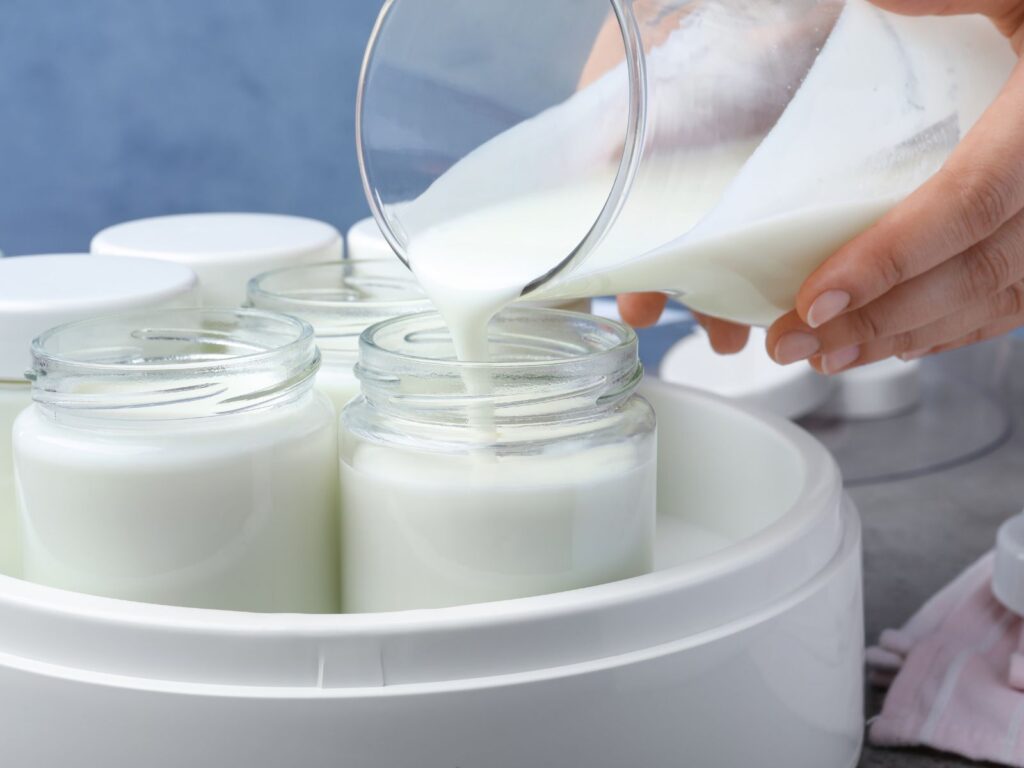
One of the major differences between these two products comes down to how you make them.
To make cheese, you need a coagulating agent, such as rennet or an acid, to milk. This causes the milk to separate into curds and whey. Next, you drain the curds, add salt and transfer them into moulds.
As a matter of fact, you can make most cheeses by following those steps. However, there are some exceptions to this rule but that is a whole new topic in its own right.
On the other hand, to make yoghurt, you need to add specific bacteria (e.g., Lactobacillus bulgaricus and Streptococcus thermophilus) to milk. The bacteria ferment the lactose in the milk, producing lactic acid, which thickens the milk and gives it a tangy flavour. The yoghurt is then cooled and may be flavoured or sweetened before being served.
What they taste like
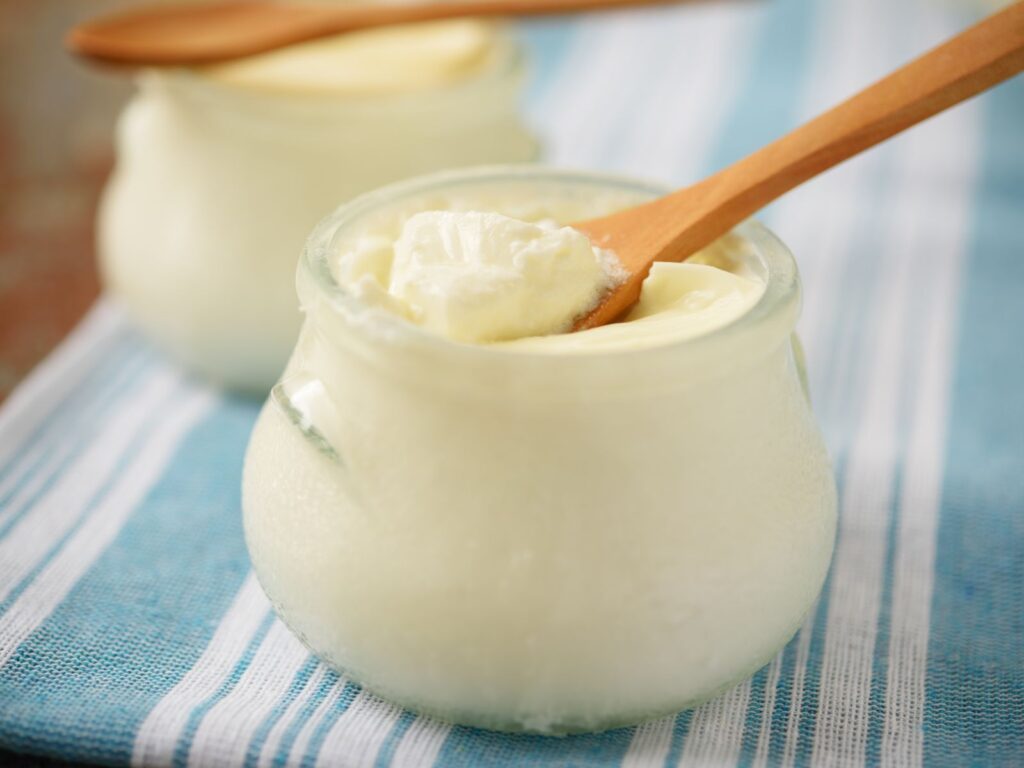
In addition to this, cheese and yoghurt differ quite significantly in their texture and taste. Cheese has a wide range of textures, from soft and creamy to hard and crumbly. It also has a distinct taste that can range from mild to pronounced, depending on the type of cheese.
On the other hand, yoghurt is creamy and smooth with a slightly thick texture. It has a tangy, slightly sour flavour with a hint of sweetness. The texture can vary depending on the type of yoghurt, but it is generally smooth and velvety, with a pleasant mouthfeel.
How they are served
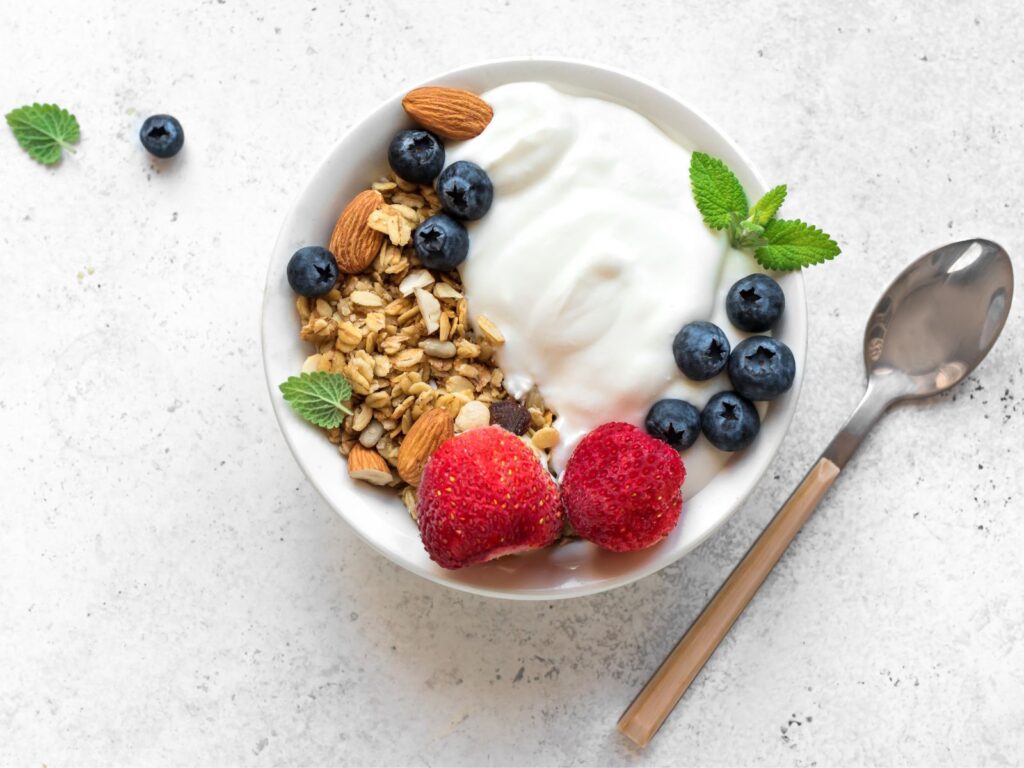
Cheese and yoghurt can be served in various ways, depending on the type of cheese or yoghurt and personal preference. Cheese is often served on its own as a snack or appetiser, or used as an ingredient in dishes such as pizza, pasta and sandwiches. Furthermore, it’s also a common topping for crackers or bread.
Conversely, yoghurt can be eaten as a snack or breakfast food, mixed with granola or fresh fruit, or used as a base for smoothies and dips.
Which one is healthier?
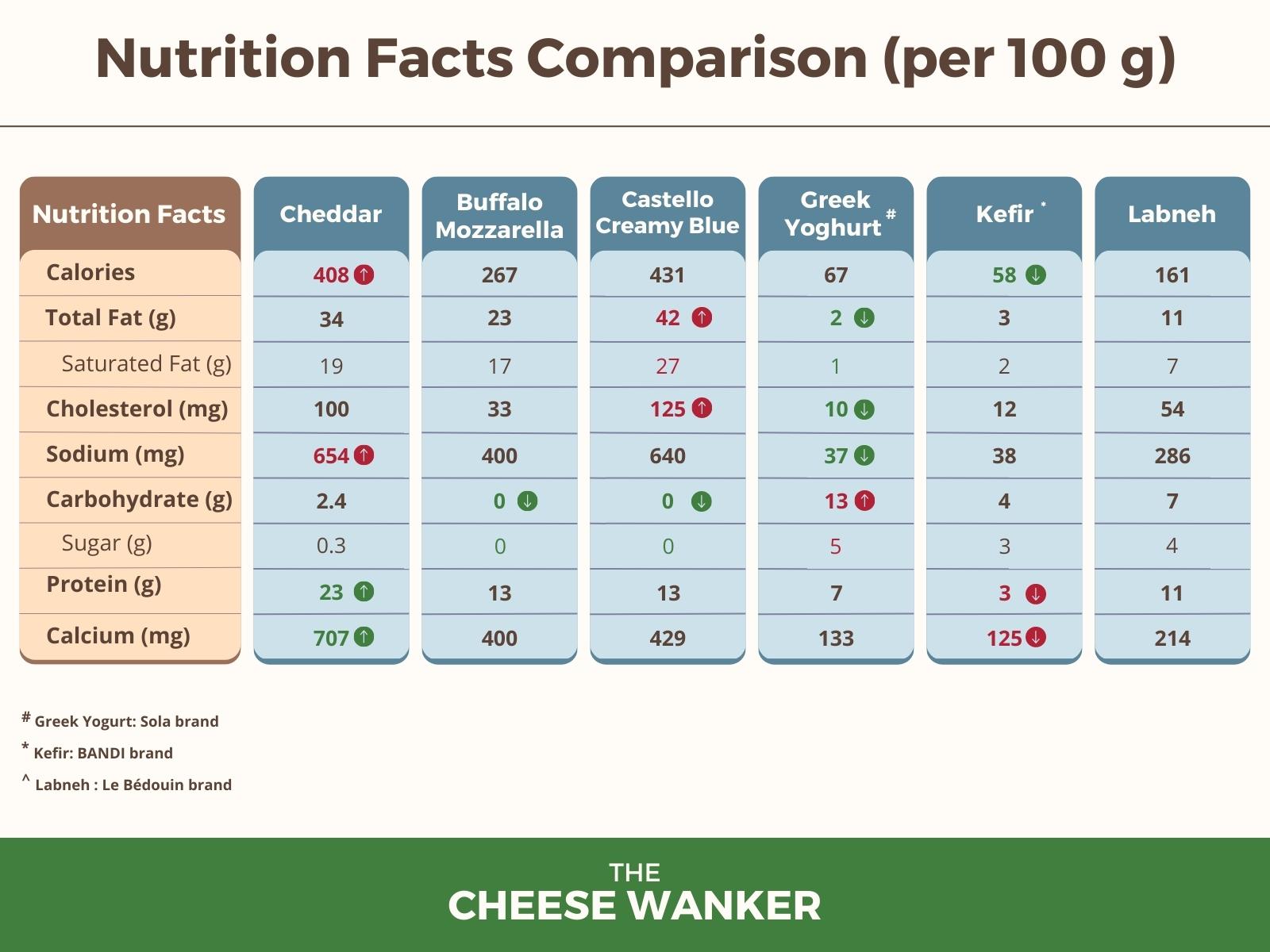
Yoghurt is a good source of protein, calcium, and probiotics, which can help support digestive health. A 100 g serving of plain yoghurt contains on average around 3-12 g of protein and 100-250 mg of calcium. Yoghurt is also low in fat, with most varieties containing less than 5 g per serving.
While there can be significant differences between different varieties, cheese tends to contain higher levels of protein and calcium. For example, most Cheddars contain around 20 g of protein and 700 mg of calcium per 100 g.
However, cheese also contains a much higher amount of fat (including saturated fats) than yoghurt. Indeed, the same Cheddar will contain around 30-35 g of fat per 100 g. Hence, cheese may not be appropriate for those watching their fat intake.
Additionally, yoghurt contains live and active cultures that can help improve gut health and boost the immune system.
Overall, both yoghurt and cheese can be part of a healthy diet, but yoghurt may be a better choice for those looking for a lower-fat option.
Different types of yoghurt
There are many different types of yoghurt, each with its unique production method, texture and flavour. Here are a few examples:
Pot Set Yoghurt
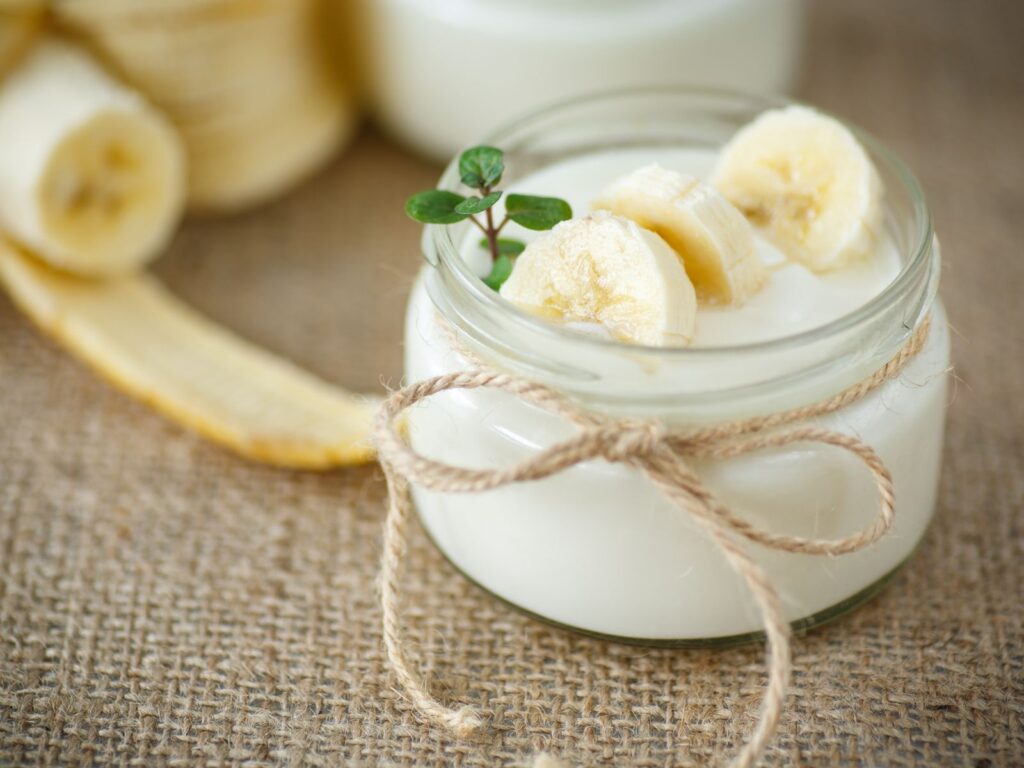
Pot set yoghurt is a type of yogurt made by fermenting milk with live bacteria cultures, which is then poured into individual containers and set without being disturbed. As a result, its texture is extremely creamy and luscious, with a slightly tangy flavour.
It is typically served chilled and can be enjoyed plain or with added fruits, honey or granola. Due to its simplicity and versatility, it is a popular choice for making homemade yogurt.
Greek Yoghurt
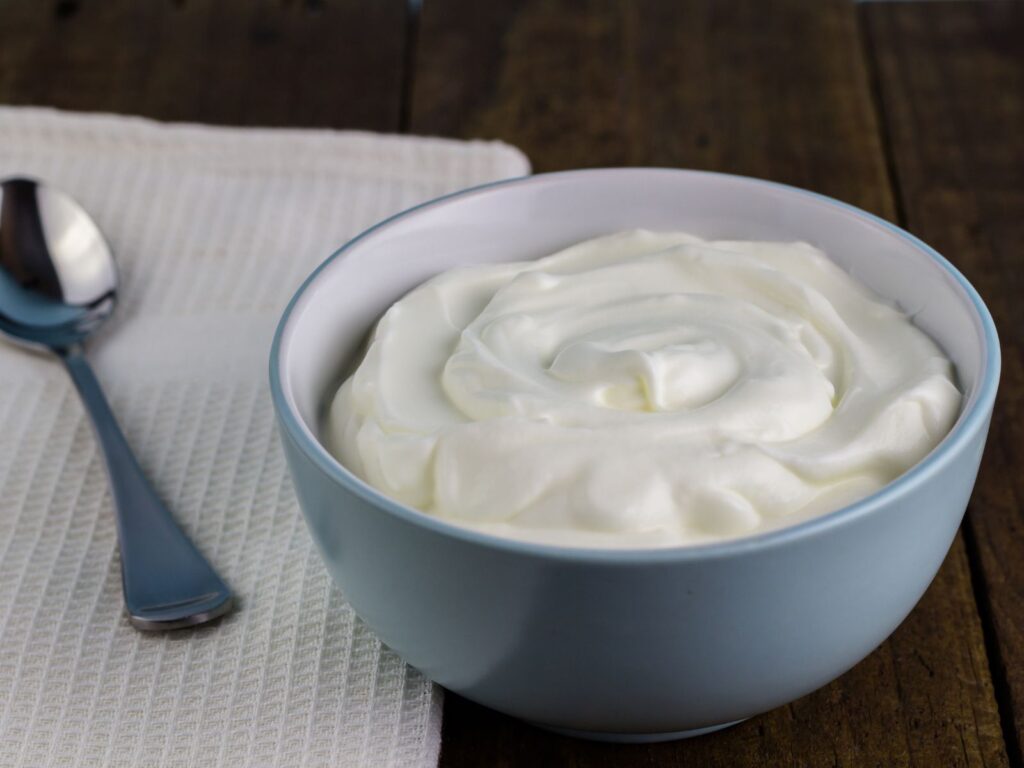
Originating from Greece, this type of yoghurt is made by straining regular yoghurt to remove the whey. As a result, its texture is thicker and creamier than regular yoghurt. Moreover, it tends to have little to no lactose which makes it a great option for people who are lactose intolerant.
Overall, it has a tangy flavour and can be served plain or flavoured, typically with fruit or honey.
Kefir
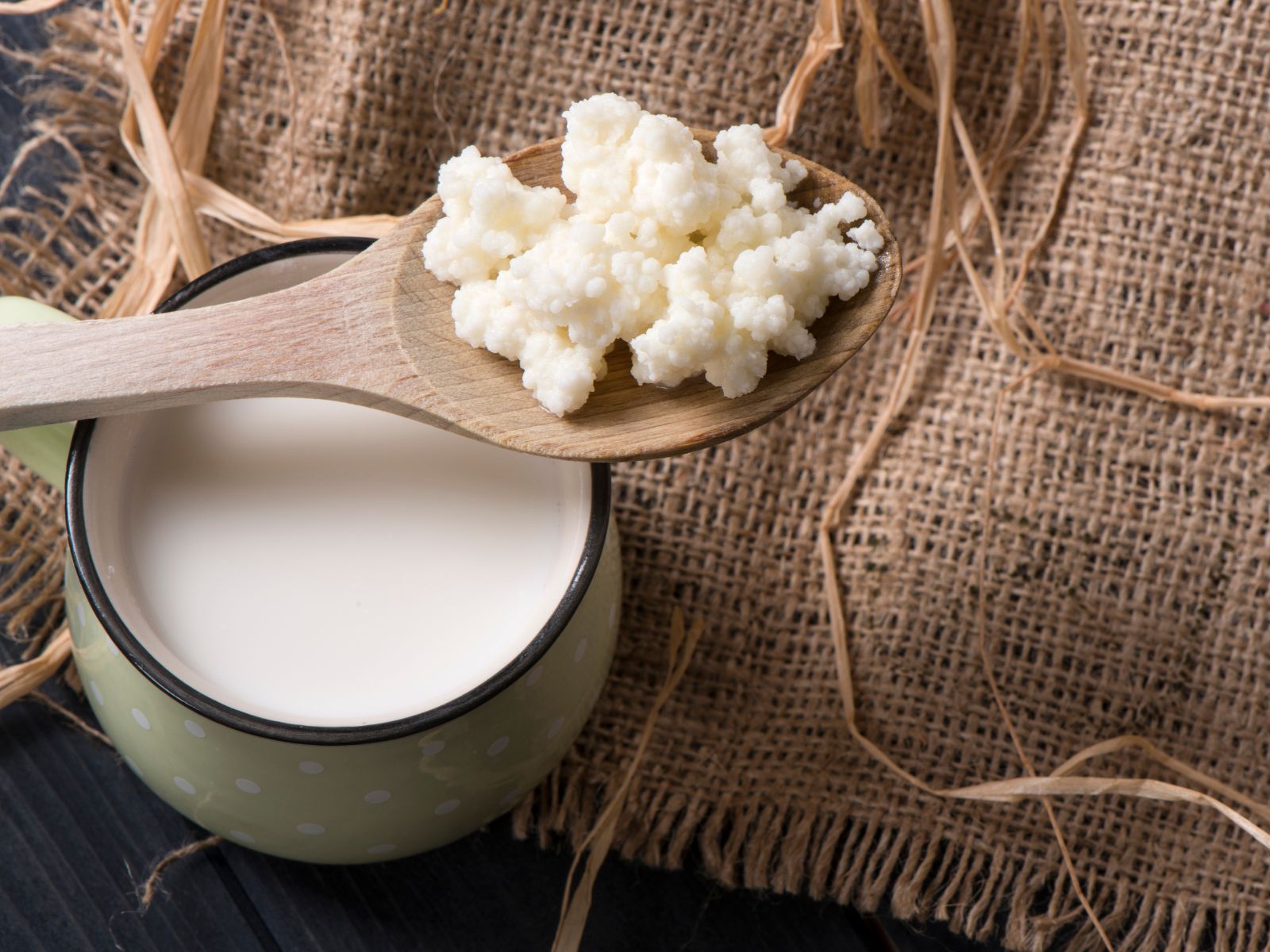
Kefir is a fermented milk beverage that originated in the Caucasus region. Indeed, its flavour can be described as tangy, creamy and slightly tart, with a refreshing acidity. Also, kefir may also have a slight carbonation due to the fermentation process, which can add a pleasant fizziness to its mouthfeel.
To make kefir, you add kefir grains (a combination of bacteria and yeast) to milk and allowing it to ferment. Overall, this type of yoghurt is known for its unique and refreshing flavour. And people around the world enjoy it both as a probiotic-rich beverage and an ingredient in cooking.
Icelandic Yoghurt (Skyr)
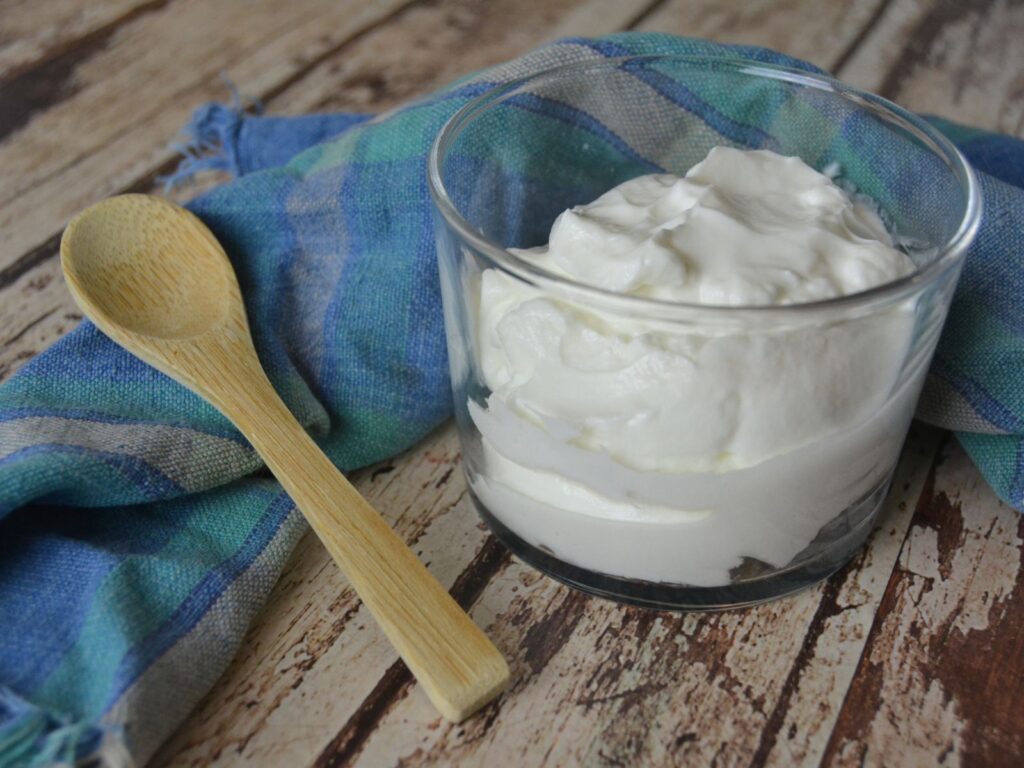
Also known as Skyr, this yoghurt originated in Iceland and is similar to Greek yoghurt in texture but has a milder flavour. It is made by incubating skim milk with live cultures, then straining to remove the whey.
Skyr is known for its creamy and thick texture, with a mild and slightly tangy taste. Moreover, this Icelandic yoghurt has a velvety mouthfeel and a subtle sweetness that is balanced by a pleasant tanginess.
People in Iceland often enjoy Skyr on its own as a creamy and protein-rich snack, or use it in recipes as a versatile ingredient.
Labneh
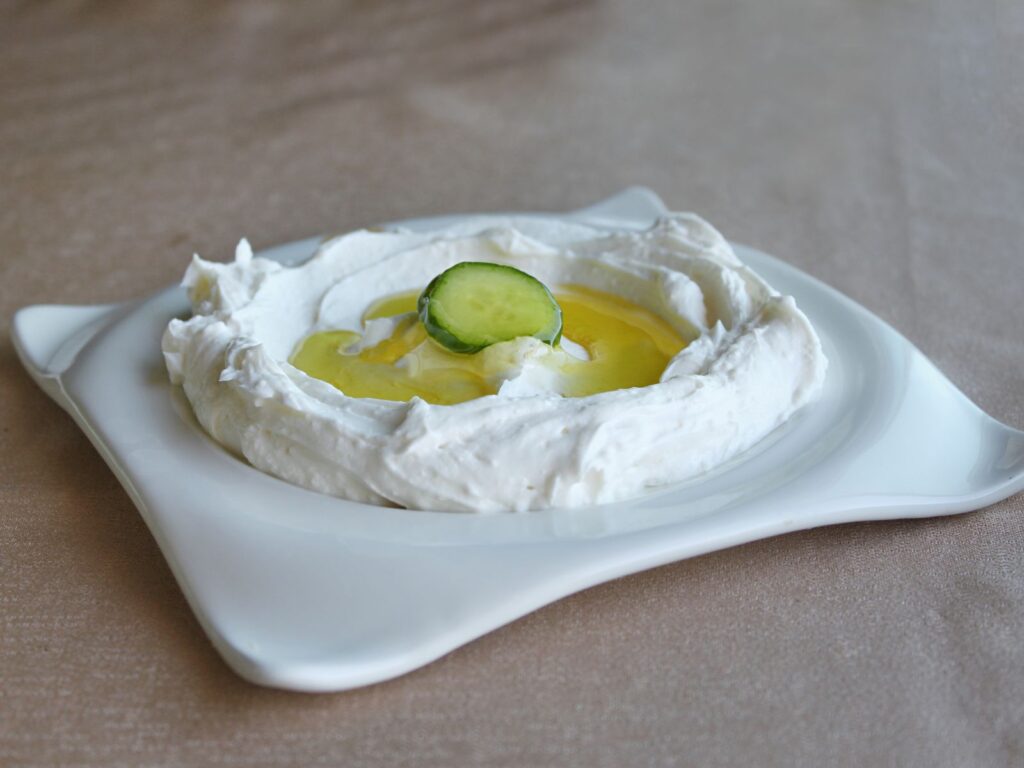
Labneh is a Middle Eastern strained yoghurt that has a unique flavour profile. It is tangy, creamy and slightly salty, with a hint of sourness. Actually, its flavour is rich and slightly more intense than regular yoghurt, with a distinctive lactic acid tang.
Without a doubt, the flavour of labneh can vary depending on the preparation, length of straining and any additional spices or herbs that may be added. Labneh is commonly used in Middle Eastern cuisine as a spread, dip or ingredient in various dishes.
Lassi
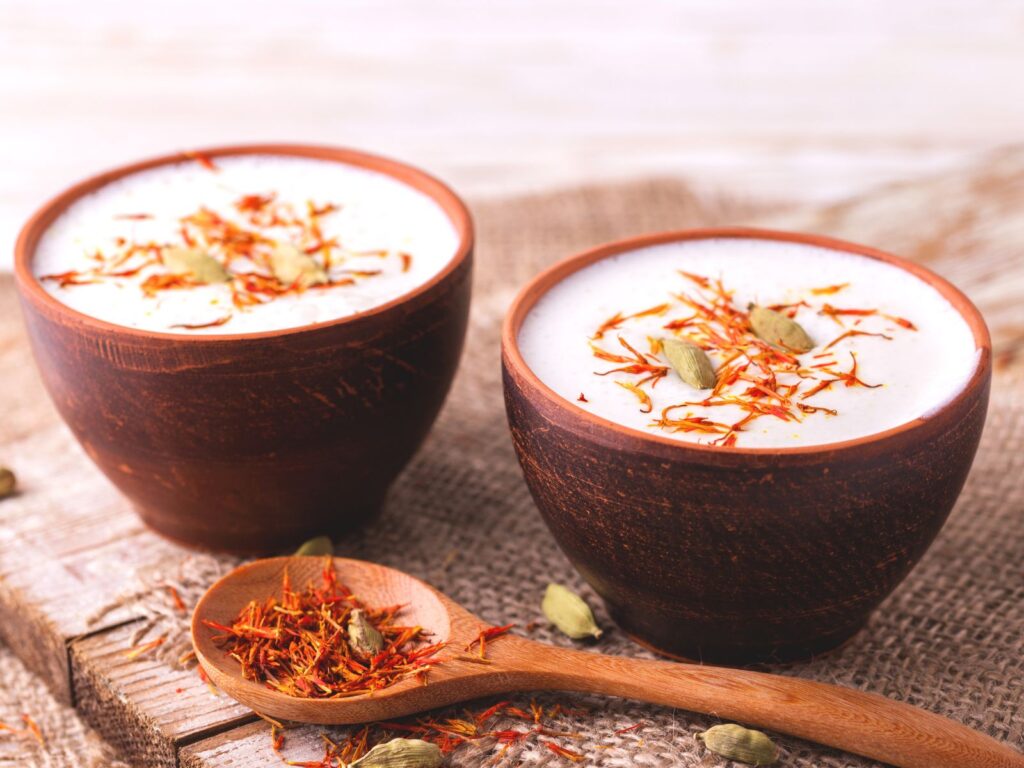
Finally, lassi is a traditional yoghurt drink that comes from India. It has a smooth, creamy texture and is made by blending yoghurt with water, spices and sometimes fruit. Typically, the locals serve it as a refreshing beverage or pair it with spicy foods.
Overall, yoghurt is a versatile dairy product that can be enjoyed in many different ways. It can be served as a snack, used as a base for dips and sauces, or incorporated into sweet or savoury dishes.
Different types of cheese
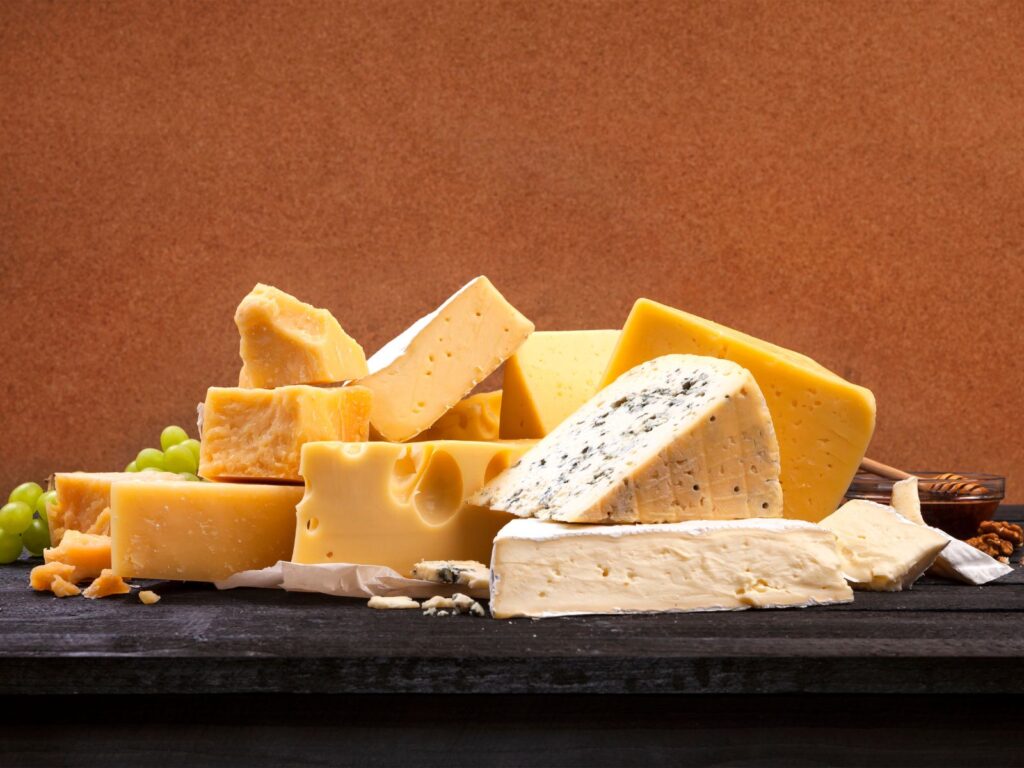
Compared to yoghurt, cheese is a much more varied dairy product. Actually, we’ve written an entire post covering the different types of cheese. As you will see, they can vary tremendously in aroma, texture and flavour.
Conclusion
In conclusion, cheese and yoghurt are both dairy products with their unique taste, texture and nutritional values. Cheese is made by curdling milk, while yoghurt is made by fermenting milk with specific bacteria strains.
Cheese is high in fat and cholesterol, while yoghurt is lower in fat and contains live and active cultures that can improve gut health. Both are versatile ingredients used in various recipes, and the choice between them depends on personal preference and nutritional needs.

